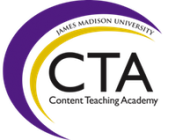- I can work cooperatively in a small team to accomplish a task.
**I can work cooperatively in a small team by using an arm extender (dynaband or scarf) and hold on the parachute with both hands.
- I can work with a small group to score 21 points by the time each player on my team has 3 turns.
**I can throw a small nerf ball into a Hula Hoop at the 1 point value per try or a 3 point value per basket.
- I can demonstrate pace and speed using a gallop, skip, and run.
**I will walk or gallop at a slow and fast pace depending on what my teacher asks me to complete.
Lesson Notes/materials:
Cooperative learning activities Unit (November) for Gen. Ed. 4th grade
Equipment: 16 cones, 8 green, yellow and red polyspots, 8 footballs, 8 small nerf footballs, 8 parachutes, 8 frogs and chickens, “Playing Catch” music, Tabata exercises (visual cards posted on the front wall). Visual Cues of the animals, the football throw, and level changes for Tabata.
